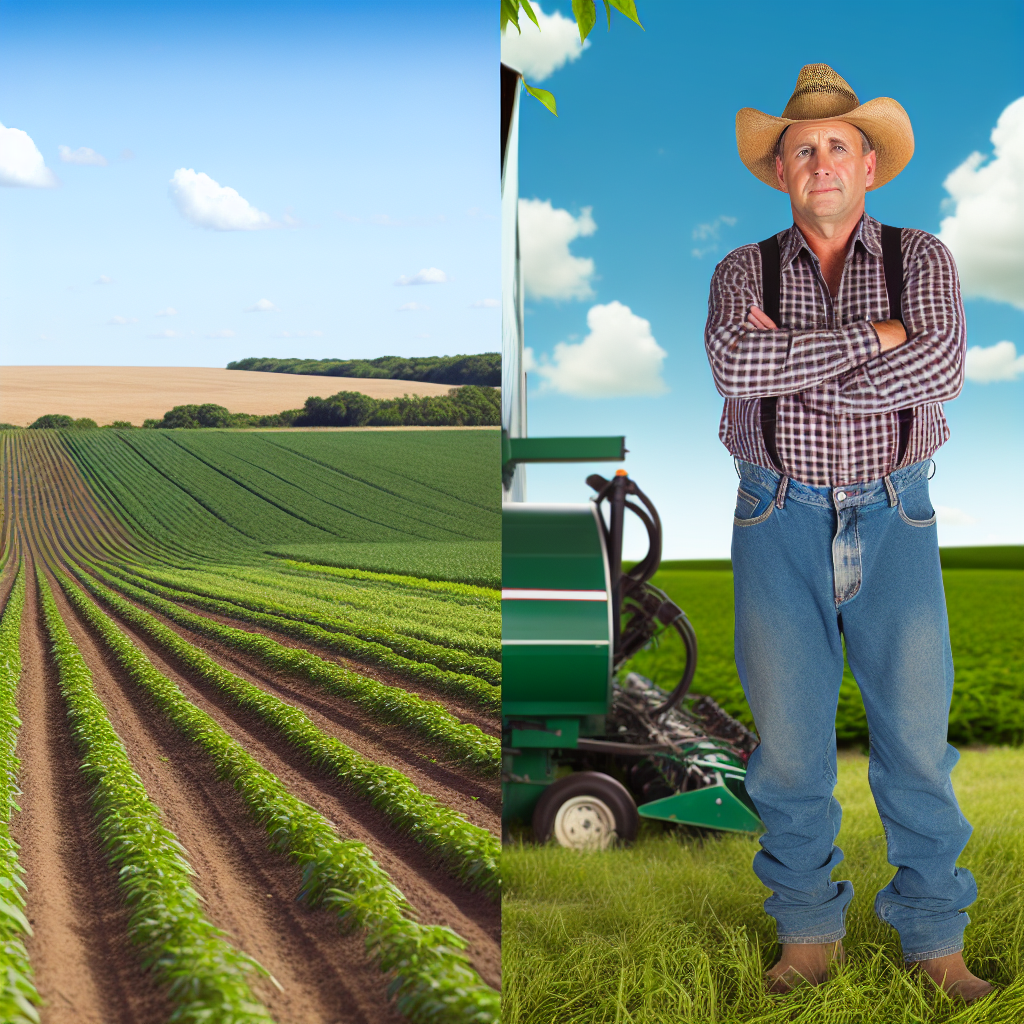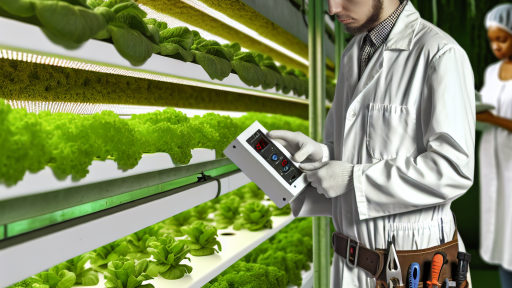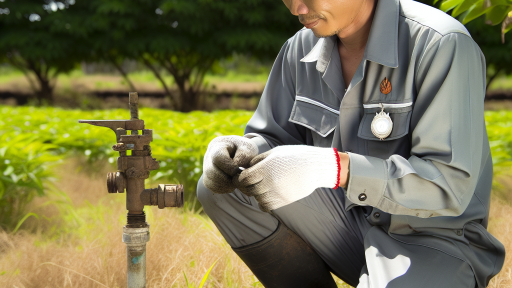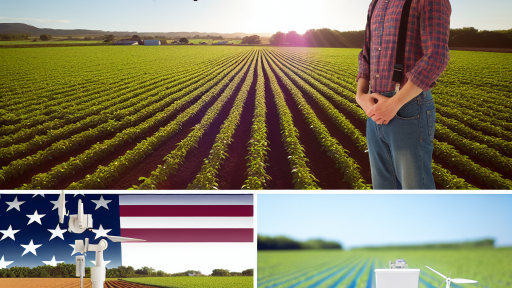Introduction to Automating Farm Operations
Farm automation is transforming agricultural practices globally.
This shift enhances efficiency and productivity in farming.
Increasing labor costs and the need for higher yields drive this trend.
Current Trends in Farm Automation
Farmers now embrace technologies like robotics and AI.
These innovations improve precision in planting and harvesting.
Moreover, drones facilitate real-time monitoring of crops.
Weather prediction tools inform better decision-making for farmers.
Additionally, sensors in fields provide data on soil health.
Benefits of Automation
Automation leads to reduced labor costs and increased productivity.
It allows farmers to focus on strategic tasks rather than mundane chores.
Furthermore, automated systems can operate around the clock.
This constant activity results in higher overall yields for crops.
Importantly, automation helps mitigate human error in farming tasks.
Challenges to Adoption
Despite the advantages, challenges in adopting automation exist.
The initial investment in technology can be substantial.
Transform Your Agribusiness
Unlock your farm's potential with expert advice tailored to your needs. Get actionable steps that drive real results.
Get StartedAdditionally, there is a learning curve associated with new systems.
Some farmers may struggle with integrating technology into existing practices.
Finally, concerns over data security also present challenges.
Benefits of Automation in Agriculture: Enhancing Efficiency and Productivity
Increased Operational Efficiency
Automation significantly improves efficiency in farm operations.
It reduces human error and enhances precision in various tasks.
Farmers can complete activities like planting and harvesting faster.
Moreover, automation allows for optimal use of resources.
Cost Savings and Resource Management
Automating processes decreases labor costs significantly.
Farmers save on wages while minimizing overtime expenses.
This process also cuts down on equipment usage and fuel costs.
Overall, automated farms utilize resources more effectively.
Improved Data Collection and Analysis
Automation facilitates the collection of real-time data.
This enables farmers to make informed decisions quickly.
Data analytics helps in predicting crop yields and optimizing planting schedules.
Additionally, farmers can monitor soil health and moisture levels accurately.
Enhanced Crop Management
Automated systems provide better control over crop conditions.
Farmers can efficiently regulate irrigation and fertilization.
This leads to healthier crops and increased production rates.
Consequently, automation can significantly boost overall yields.
Labor Force Optimization
Automation allows farmers to allocate labor more strategically.
Workers can focus on higher-value tasks that demand human intervention.
This shift enhances job satisfaction and productivity among employees.
Ultimately, it leads to a more skilled and efficient workforce.
Environmental Benefits
Automating farming practices can reduce the carbon footprint.
Showcase Your Farming Business
Publish your professional farming services profile on our blog for a one-time fee of $200 and reach a dedicated audience of farmers and agribusiness owners.
Publish Your ProfileEfficient use of resources diminishes waste and runoff.
This helps in conserving water and protecting biodiversity.
Moreover, it promotes sustainable agricultural practices over time.
Types of Farm Operations Suitable for Automation
Crop Management
Crop management involves various tasks that can benefit from automation.
Planting, watering, and harvesting are critical processes in this category.
Automated systems can monitor soil conditions and adjust irrigation accordingly.
This significantly reduces water waste and enhances crop yield.
Pest and Disease Control
Pest control is essential for maintaining crop health.
Automated drones can efficiently spray pesticides while minimizing human exposure.
Additionally, machines can scan for early signs of disease, allowing for quick intervention.
Thus, automation aids in reducing crop losses due to pests and diseases.
Livestock Management
Livestock management tasks can also benefit from automation technology.
Automated feeders ensure that animals receive consistent meals at set times.
Furthermore, health monitoring systems track vital signs, alerting farmers to potential issues.
This immediate feedback helps in maintaining overall herd health and productivity.
Data Collection and Analysis
Data collection is vital in modern farming practices.
Automated systems gather data on weather patterns, soil health, and crop performance.
Advanced analytics can then provide insights, leading to better decision-making.
This data-driven approach can optimize resource allocation and improve yields.
Supply Chain Management
Streamlining supply chain operations is crucial for farm success.
Automation can synchronize production schedules with market demands.
Automated inventory systems help track supplies and forecast needs accurately.
This reduces waste and enhances profitability for farmers.
You Might Also Like: Enhancing Crop Management With Robotics
Technological Tools for Farm Automation
Overview of Hardware Solutions
Farm automation begins with various hardware tools.
Robots designed for tasks like planting and harvesting improve efficiency.
Tractors equipped with GPS assist in precise navigation and planting.
Drones enhance surveillance and monitoring of crop health.
Moreover, sensors provide real-time data on soil conditions.
Automated irrigation systems optimize water usage effectively.
These technologies collectively streamline operations on the farm.
Exploring Software Solutions
Software tools play a crucial role in farm automation.
Farm management software helps track inventory and expenses.
It also aids in planning and scheduling crop rotations.
Data analytics software provides insights into crop performance.
Additionally, precision agriculture software analyzes field data.
Farmers can make informed decisions to enhance productivity.
Integration of these software solutions offers comprehensive management.
Benefits of Automation
Automation significantly increases overall farm efficiency.
It reduces labor costs by minimizing manual tasks.
Showcase Your Farming Business
Publish your professional farming services profile on our blog for a one-time fee of $200 and reach a dedicated audience of farmers and agribusiness owners.
Publish Your ProfileAutomation also leads to higher crop yields.
With better data, farmers can make proactive decisions.
Consequently, this aids in resource management and sustainability.
Moreover, automation can enhance safety in agricultural operations.
Farmers can rely on technology to handle hazardous tasks.
Challenges of Implementing Automation
Despite its benefits, automation poses several challenges.
High initial costs can deter farmers from investing.
Moreover, technology adoption requires training and support.
Farmers must familiarize themselves with new tools and systems.
Additionally, system integration can be complex and time-consuming.
Finally, there may be concerns about data security and reliability.
Addressing these challenges is essential for successful implementation.
You Might Also Like: Implementing Vertical Farming Solutions on Your Farm
Case Studies of Successful Implementation of Automation in Various Farms
Green Acres Orchard
Green Acres Orchard introduced automated irrigation systems last year.
This technology saved them 30% on water usage.
They now monitor soil moisture levels remotely.
This shift enhanced their crop yield significantly.
Additionally, labor costs decreased with reduced manual work.
Sunny Ridge Dairy Farm
Sunny Ridge Dairy Farm adopted robotic milking machines.
The machines operate around the clock, allowing for 24/7 milking.
As a result, milk production increased by 15% annually.
This automation improved worker satisfaction and efficiency.
Farmers can now focus on herd health and other duties.
Harvest Haven Vegetable Farm
Harvest Haven installed automated harvesting technology.
This advanced machinery reduced harvest time by 40%.
Furthermore, it ensured uniformity in harvesting processes.
The farm has seen an overall increase in profitability since then.
Workers shifted to roles that require higher skill levels.
River Valley Grain Farm
River Valley Grain Farm implemented precision agriculture technology.
They used drones to monitor field conditions effectively.
This setup optimized fertilizer usage across their fields.
Consequently, they achieved a 20% reduction in input costs.
The precision techniques also maximized their crop outputs.
Mountain View Winery
Mountain View Winery employs robotic vineyard management systems.
These robots assist with pruning and grape picking.
The vineyard reports enhanced grape quality and quantity.
Moreover, labor-related injuries decreased with this automation.
Employees are now more engaged in creative winemaking tasks.
Uncover the Details: Monitoring and Managing Smart Irrigation Systems
Challenges in Automating Farm Operations
Understanding Resistance to Change
Farmers often resist new technologies due to fear of complexity.
Showcase Your Farming Business
Publish your professional farming services profile on our blog for a one-time fee of $200 and reach a dedicated audience of farmers and agribusiness owners.
Publish Your ProfileMoreover, traditional farming practices create a sense of comfort.
Hence, addressing these concerns is vital for effective implementation.
Cost Implications of Automation
Implementing automation can incur significant initial costs.
Many farmers worry about the return on investment.
As a result, thorough cost-benefit analyses become necessary.
Technology Integration Issues
Integrating new technologies with existing systems poses challenges.
Compatibility between various software and hardware can be problematic.
Consequently, seamless integration is crucial for success.
Skill Gaps Among Workers
A lack of skilled labor can hinder automation efforts.
Training current employees on new technologies is essential.
Additionally, attracting new talent may be needed to fill gaps.
Regulatory Concerns
Farmers must navigate complex regulations regarding automation.
Understanding these legal frameworks is often overwhelming.
Therefore, clear guidance from authorities is necessary.
Dependence on Technology
Relying heavily on technology raises concerns about vulnerability.
System failures can disrupt critical farm operations.
For this reason, developing contingency plans is essential.
Discover More: Predictive Analytics for Pest Control

Future of Agricultural Automation: Innovations on the Horizon
Emerging Technologies in Agriculture
Farmers increasingly adopt innovative technologies to enhance efficiency.
Automation tools are becoming essential in modern agriculture.
Robotics play a crucial role in planting, harvesting, and monitoring crops.
For instance, autonomous tractors streamline field operations.
Additionally, drones provide crucial data for precision farming.
Data-Driven Farming Solutions
Farmers now rely on big data to make informed decisions.
Data analytics optimizes yield and resource management.
Farm management software integrates various data sources seamlessly.
This technology helps track weather patterns and soil conditions.
As a result, farmers can adjust their strategies for maximum productivity.
Innovations in Crop Monitoring
Advanced sensors aid in real-time crop monitoring.
These sensors measure soil moisture, temperature, and nutrient levels.
Using this information, farmers can implement targeted interventions.
Consequently, crop health improves, maximizing harvest potential.
Future Prospects in Agricultural Automation
The future of agricultural automation looks promising.
Continuous advancements will lead to greater sustainability.
Innovative solutions will emerge, making farming more efficient.
Farmers will benefit from reduced labor costs and increased output.
Ultimately, these innovations strengthen food security globally.
Tips for Farmers: How to Start Automating Your Farm
Assess Your Current Operations
Begin by evaluating your existing farm operations.
Identify tasks that consume most of your time.
Additionally, note which processes could benefit from automation.
Showcase Your Farming Business
Publish your professional farming services profile on our blog for a one-time fee of $200 and reach a dedicated audience of farmers and agribusiness owners.
Publish Your ProfileSet Clear Goals
Create specific objectives for automation.
Consider improving efficiency and reducing labor costs.
Also, think about enhancing crop yields and product quality.
Research Available Technologies
Explore various automation technologies suitable for farming.
Look into robotic equipment, drones, and sensors.
Moreover, consider software solutions for management and monitoring.
Start with Small-Scale Automation
Implement automation on a small scale to test its effects.
Select one or two tasks to automate initially.
This approach helps minimize risks and allows for adjustments.
Train Your Team
Ensure that your team understands new technologies.
Provide training sessions on operating automated systems.
Additionally, encourage feedback to improve processes.
Monitor and Optimize
Regularly assess the performance of automated systems.
Collect data to measure efficiency and effectiveness.
Use this information to make informed adjustments when needed.
Stay Updated with Innovations
Keep abreast of the latest advancements in agricultural technology.
Participate in industry conferences and seminars.
Furthermore, join online forums to learn from other farmers.
Evaluate Financial Implications
Consider the costs associated with automation.
Calculate potential savings and return on investment.
Additionally, explore financing options if necessary.
The Impact of Automation on the Future of Farming
Enhancing Operational Efficiency
Automation significantly increases operational efficiency on farms.
It reduces the time spent on routine tasks.
Farmers can focus on higher-priority activities.
Additionally, automation minimizes human error.
This leads to more accurate data collection.
Boosting Crop Yields
Automating irrigation systems enhances crop yields.
Farmers can optimize water usage effectively.
Moreover, precision agriculture techniques are now viable.
Drones monitor field conditions in real-time.
This data helps farmers make informed decisions.
Reducing Labor Costs
Automation significantly lowers labor costs for farmers.
Robotic harvesters can efficiently gather crops.
With fewer workers needed, expenses decrease.
Farmers can invest those savings back into their operations.
Embracing Sustainable Practices
Automation also promotes sustainable farming practices.
It reduces pesticide and fertilizer usage through precision applications.
Thus, it results in less environmental impact.
Moreover, automating record-keeping helps track sustainability metrics.
This transparency encourages better practices across the industry.
Showcase Your Farming Business
Publish your professional farming services profile on our blog for a one-time fee of $200 and reach a dedicated audience of farmers and agribusiness owners.
Publish Your ProfileAdapting to Climate Change
Automation offers tools to address climate change challenges.
Farmers can monitor weather patterns and adjust operations accordingly.
Additionally, advanced technology helps crops withstand adverse conditions.
Thus, farmers become more resilient against changing climates.
Preparing for the Future
The future of farming lies in ongoing automation advancements.
As technology evolves, so will farming methods.
Farmers must adapt to stay competitive in the market.
Continuous training on new technologies will be essential.
Ultimately, this transition can lead to a more efficient food production system.
Additional Resources
Robots in Agriculture: Automating Farm Production
AI in Agriculture and Farming: Revolutionizing Crop Growth – Intellias




